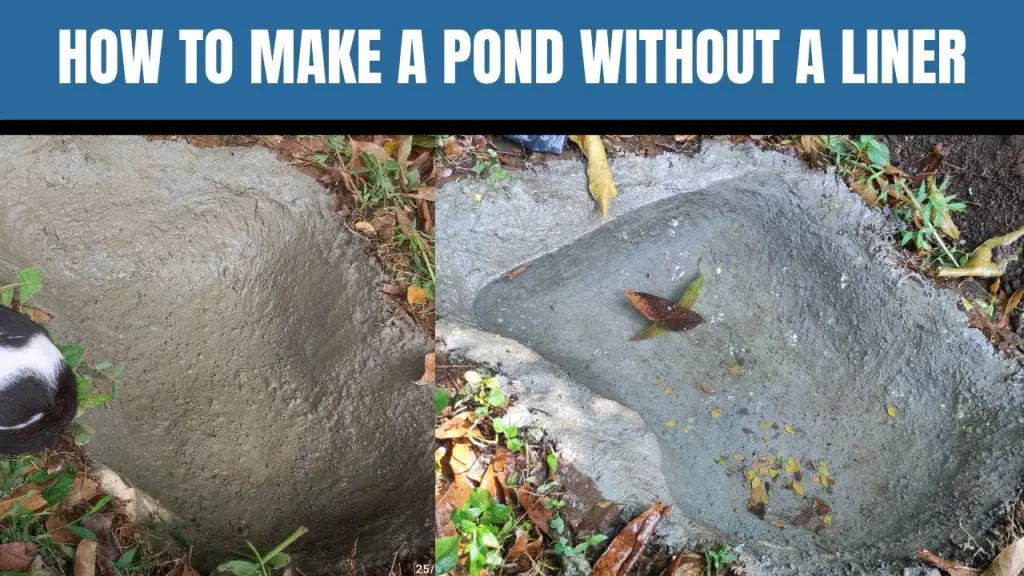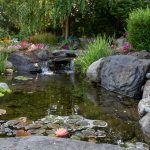How to Build a Pond Without a Liner
Are you dreaming of a serene and picturesque pond in your backyard, but the thought of installing a liner is holding you back? Building a pond without a liner is indeed possible and can offer a more natural and eco-friendly alternative. In this comprehensive guide, we’ll explore the steps and considerations for creating a beautiful pond without a liner, allowing you to harmoniously integrate a water feature into your landscape.
### Understanding the Concept
Building a pond without a liner involves creating a water-retaining structure using natural elements such as clay, silt, and soil. The idea is to leverage the inherent impermeability of these materials to hold water without the need for a synthetic liner. While this approach requires careful planning and execution, it can result in a more organic and sustainable pond that seamlessly blends with its surroundings.
### Selecting the Right Location
Before delving into the construction process, it’s crucial to identify the ideal location for your pond. Choose a spot with adequate sunlight for healthy plant growth and consider the overall aesthetic and functional aspects. Ensure that the area is free from underground utilities and is not prone to excessive runoff, which could cause erosion and compromise the pond’s integrity.
### Planning and Design
A well-thought-out plan is essential for the success of your linerless pond. Consider the desired size, shape, and depth of the pond, keeping in mind the surrounding landscape and existing vegetation. Take into account the natural slope of the land to create a more seamless integration with the environment.
### Excavation and Shaping
Once the planning phase is complete, it’s time to roll up your sleeves and start excavating the pond area. Use a shovel or, for larger projects, a backhoe to carefully shape the pond, ensuring that the edges are gently sloped to mimic the natural contours of a natural water body. By blending the pond seamlessly into the landscape, you can achieve a more visually appealing result.
### Soil Testing and Amendment
Testing the soil composition is a critical step in building a linerless pond. Conduct a soil percolation test to assess its ability to retain water. If the soil is found to be too porous, it may require amendments such as clay or bentonite to enhance its water-holding capacity. These natural materials can be incorporated into the soil to create a more effective barrier against water seepage.
### Creating a Sealing Layer
To further fortify the pond’s water retention capabilities, consider adding a sealing layer using a combination of clay and organic matter. This layer acts as a natural barrier to minimize water seepage and enhance the pond’s ability to retain water. It’s important to compact the sealing layer thoroughly to eliminate air pockets and create a solid foundation for the water body.
### Incorporating Aquatic Plants
One of the key benefits of a linerless pond is the opportunity to foster a thriving ecosystem with the inclusion of aquatic plants. These plants not only enhance the visual appeal of the pond but also contribute to its overall health by oxygenating the water and providing habitat for aquatic life. Choose a diverse selection of native aquatic plants to create a balanced and sustainable ecosystem.
### Establishing a Balanced Ecosystem
Maintaining a healthy balance within the pond is essential for its long-term success. Introduce a variety of aquatic life, such as fish and beneficial microorganisms, to promote a natural equilibrium. By fostering a self-sustaining ecosystem, you can reduce the need for chemical treatments and create a more resilient and biodiverse habitat.
### Monitoring and Maintenance
Once your linerless pond is established, regular monitoring and maintenance are crucial to ensure its longevity and vitality. Keep an eye on water levels, especially during dry spells, and address any signs of erosion or seepage promptly. Routine maintenance tasks such as removing debris and managing aquatic plant growth will help preserve the beauty and functionality of the pond.
### Advantages of a Linerless Pond
Building a pond without a liner offers a host of advantages, making it an appealing option for nature enthusiasts and environmentally conscious individuals. By utilizing natural materials and processes, you can create a more sustainable and eco-friendly water feature that seamlessly integrates with the surrounding landscape. Additionally, the absence of synthetic liners eliminates the need for potentially harmful chemicals and reduces the environmental impact of pond construction.
### Embracing Natural Beauty
A linerless pond embodies the beauty of nature in its purest form. The use of natural materials and the integration of native flora and fauna contribute to a harmonious and visually captivating water feature. Whether you’re aiming for a tranquil retreat or a vibrant wildlife habitat, a linerless pond can fulfill your vision while fostering a deeper connection with the natural world.
### Conclusion
Building a pond without a liner presents a rewarding opportunity to create a sustainable and captivating water feature that harmonizes with its surroundings. By leveraging natural materials, thoughtful design, and a commitment to ecological balance, you can craft a pond that not only enhances the beauty of your landscape but also supports a thriving ecosystem. With careful planning and ongoing stewardship, a linerless pond can become a timeless centerpiece that enriches your outdoor space for years to come.





